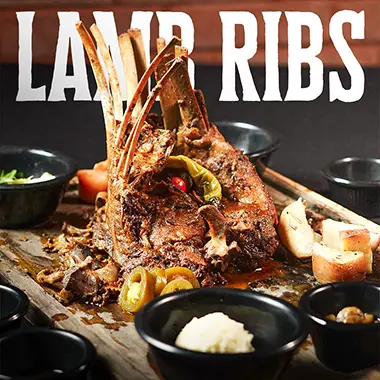Lamb chops, with their juicy, melty texture, are a favorite meat at many restaurants. The tenderness of a flawlessly prepared lamb chop is unmatched, whether it’s grilled, pan-seared, or oven-roasted. Let’s talk about how to make them perfect every time.
The cut matters:
Lamb chops come from the rib, loin, or shoulder of the lamb. The most naturally flavorful cuts are considered to be rib and loin chops due to low activity compared to other parts of the animal.
- Rib chops: These are known for their incredible flavor and richness. The bone in rib chops helps retain moisture while cooking which makes every bite succulent.
- Loin chops: Often called the ‘T-bone steak’ of lamb, these are from the back of the animal. These are equally tender, with a slightly leaner texture.
Young lamb equals tender meat:
Lambs are usually slaughtered at a young age of about 6 to 12 months. The younger the animal, the more tender the meat. As it contains less connective tissue than older animals, that is why it cooks quickly and remains delicate. The collagen in the connective tissues of younger animals also breaks down more easily giving it a softer texture.
Marbling – the nature’s tenderizer:
One key factor behind a perfect lamb chops is the amount of fat marbling. It refers to the small streaks of fat within the meat. When heated, this fat melts and infuses the meat with flavor and moisture. Lamb naturally has more marbling than beef or pork, which is why it stays juicy and tender even with a small amount of seasoning.
The role of proper cooking:
Overcooking can even turn the most tender cuts of lamb tough. The trick to maintain tenderness is through high temperatures, as;
- Whether grilling or pan-searing, high temperatures help to develop a delicious crust on the outside while the inside stays tender and juicy.
- After cooking, letting lamb chops rest for a few minutes before serving helps with juiciness and moisture when you cut into them.
Tender perfection: marinades and brining:
Marinating lamb chops prior to cooking can further enhance their level of flavorness. Acidic ingredients like lemon juice, yogurt, or vinegar help break down and soften the proteins. Also, using a salt-based brine helps to keep moisture to get that succulent bite every time.
Selecting quality lamb:
Not all lamb is created equal. The tenderness of lamb chops can also be affected by the location and manner in which the lamb is raised. If it is pasture-raised and grass-fed lamb, it tends to have a richer flavor and more tender texture than the lamb raised on a grain-based diet. Restaurants that prioritize high-quality, ethically sourced lamb will serve cuts that are naturally more tender and flavorful to delight your taste buds.

 العربية
العربية







